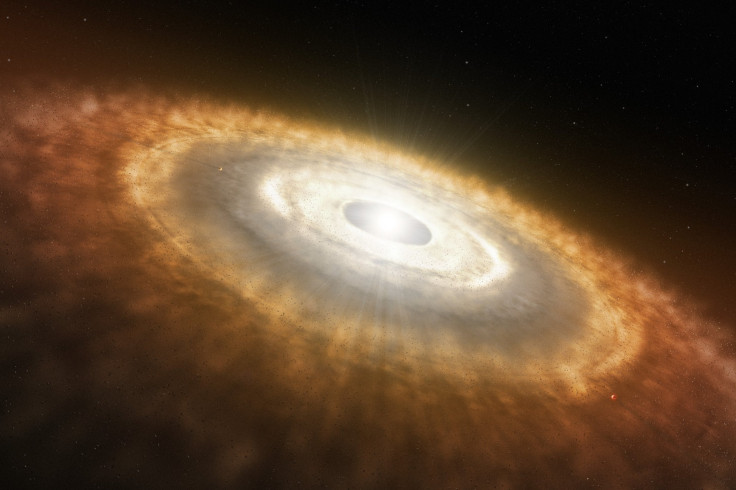'Zombie Vortices' Give Life To New Stars, Say Researchers

A new theory suggests star formation may be aided by “zombie vortices,” which serve to destabilize the gas disk surrounding a protostar. The vortex can stop the disk’s momentum, allowing for the dense gas to fall into the protostar, providing the material necessary for a new star to be born.
A protostar is the birth of a star and occurs when a dense gas cloud breaks apart into smaller gas disks. These smaller gas disks will soon form a protostar, but there needs to be something that destabilizes it and stops its momentum. As the disk spins it prevents the gas and dust from falling into the center, providing the material for star formation.
There needs to be a disturbance to trigger the collapse of material into the center in order to feed the protostar; the process can last as long as 100,000 years, before it becomes a T Tauri star. The new star will then eject material and its radiation will remove the remainder of the disk.
Researchers from the University of California, Berkeley believe “zombie vortices” may aid in disrupting the disk’s momentum. The vortex is created by variations in gas density within the disk, based on changes in gas density due to height. The gas density variation, when applied in a computer model of a protoplanetary disk, created dead spots, or vortices, which lead to the creation of more vortices eventually stopping the disk’s momentum.
Lead researcher Philip Marcus, a computational physicist at the university, said in a statement, “Because the vortices arise from these dead zones, and because new generations of giant vortices march across these dead zones, we affectionately refer to them as ‘zombie vortices.”
It was previously believed the destabilization of a disk was due to magnetic fields, but new research discovered areas that were too cold to interact with the magnetic field. The density change, due to height, has been previously demonstrated on Earth and in space. Jupiter’s Great Red Spot is attributed to a change in density while whirlpools on Earth are due to density variations, notes the university.
The research was published in the journal Physical Review Letters. Marcus and his team are planning on working with fellow astronomers at UC Berkeley to test the zombie vortices theory.
© Copyright IBTimes 2024. All rights reserved.






















